The Studio in 2007
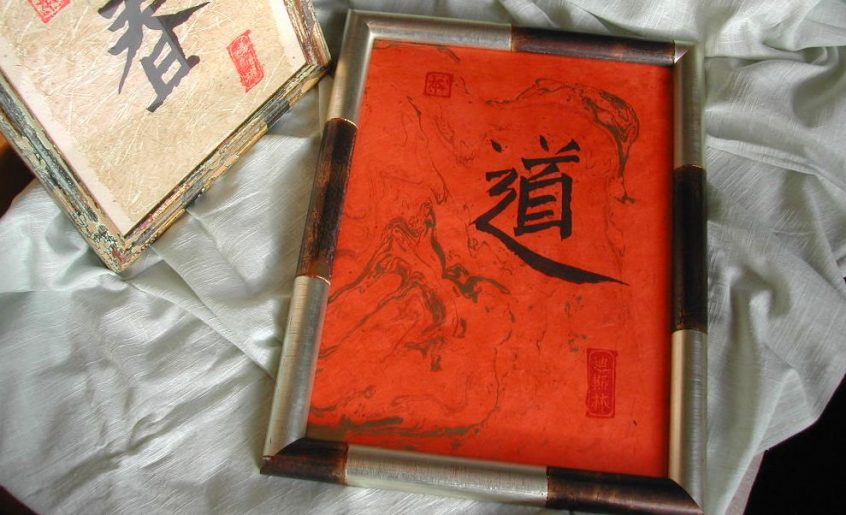
This year burnishing is again on the menu, so to speak. An elderly lady, a former art and biology teacher gets in touch. While studying in the early post-war years, she made a number of wood etchings, and, due to the lack of paper, she could only print the copies for handing in to her supervisor, never having printed any for herself. She wishes to have an edition printed, but cannot do so herself for health reasons. Many of the blocks cannot be printed on my printing press, for the simple reason that they are either too thick or have become too warped over time. So, as tedious as it might be, every single copy of the edition has to be burnished.
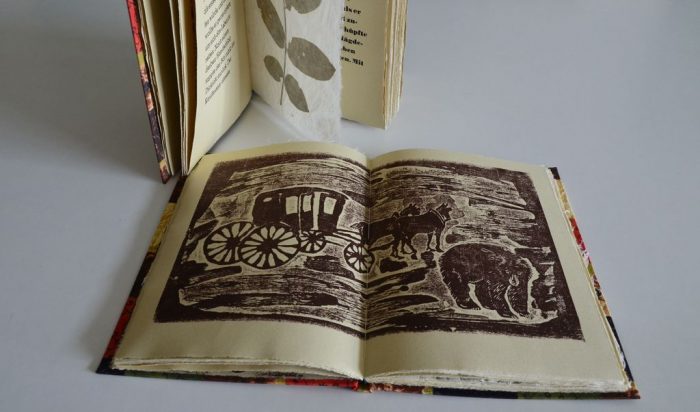
There is still another printing technique that proves to be tempting and rather irresistible to me. While still at university I just loved working in the chemistry lab with beakers, glass flasks and pipettes, regardless if it was for analysing or synthesizing substances. The process of lino etching was right up my alley. In the previous year I started experimenting with the process for the print series „When there still were Gods“. This year the illustrations for the new artist‘s book will be etchings. The images are to be printed in a shade of sepia. The text is the fairy tale „Das Nußzweiglein“ (The little Branch of a Nut Tree) from the collection by Ludwig Bechstein. The special feature are two leaves of our big walnut tree, properly herbarised and sandwiched between two sheets of silk paper and then sewn into each copy.
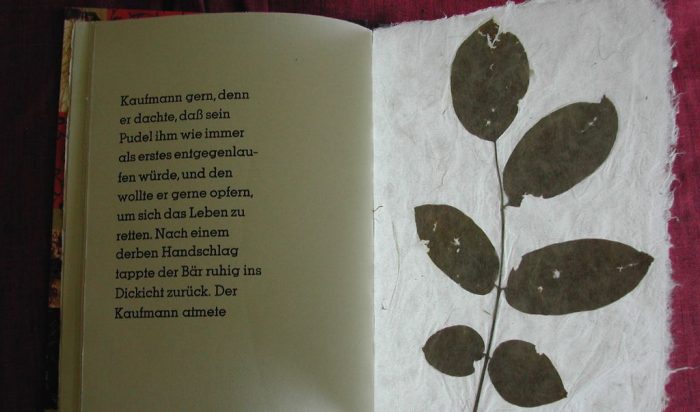
The thrilling thing about lino etching is that it cannot be totally controlled. How the process will work out depends on the concentration of the etching liquid, the composition of the linoleum used, and most importantly its age. I design five illustrations for the book including a portrait of Ludwig Bechstein. I choose a greenish, laid deckled-edge paper made by Zerkall. The book pays homage to the special measuring system used in working with metal type. The text is handset from various typefaces but all metal type used is of 20pt. Even though there is only limited space on a 20pt body size, type designers developed a wealth of different designs with a great variety of characters and effects. For the cover of the special edition an African hand batik fabric is used, the standard edition is bound in quilt fabric featuring bears. Either edition comes in a wooden box with a sliding lid. Lino etching will become a constant in my artistic work.
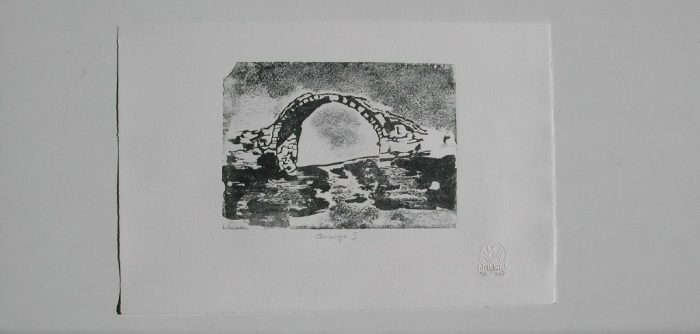
Exactly 125 years ago Victor Hammer (1882-1967) was born. He is the designer of the metal type that came to be the first one in the studio, which goes by the name Hammer-Uncial. The broadside Psalm 104 pays homage to him and his beautiful typeface. Victor Hammer, born in Austria, left Germany and Europe after Nazi-Germany‘s annexation of Austria in March 1938, and settled in the US.
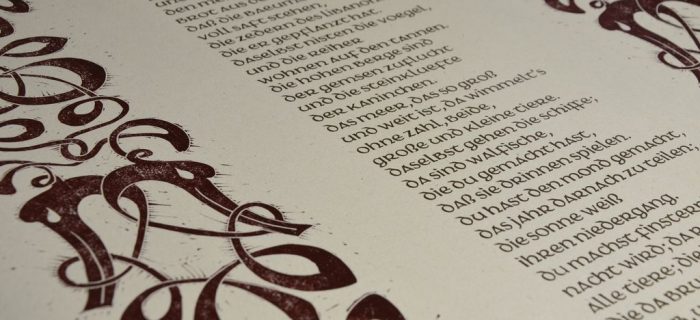
Early in the year, while we still have snow and it is cold, Australian artist Marianne Midelburg comes visiting friends in the area. Word gets round and as a member of a local Artist‘s Collective I get in touch with the curator in charge. We use an old watermill as our gallery space, and normally winter is out of exhibiton season for us. But in this special case we decide to put the heating on and improvise. I help Marianne setting up a nice exhibition of a selection of her artwork in this special local art venue. Marianne and I remain in touch, become friends and eventually, in the not so distant future, we make a book together.
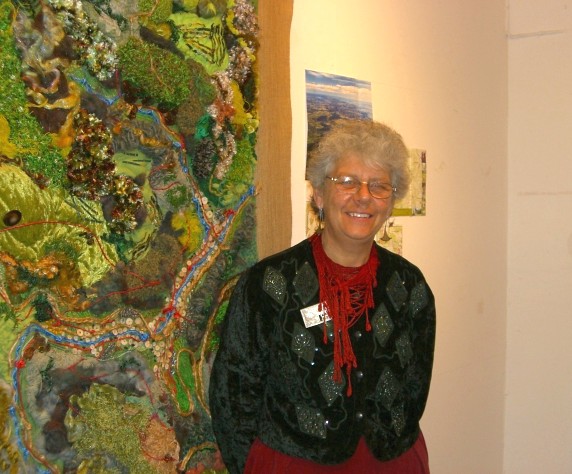
Briefly noted:
I enroll with BK – Bundesverband Kunsthandwerk / Berufsverband Handwerk Kunst Design e. V.
Learning Chinese Calligraphy with Ms Man Hou-Kolb
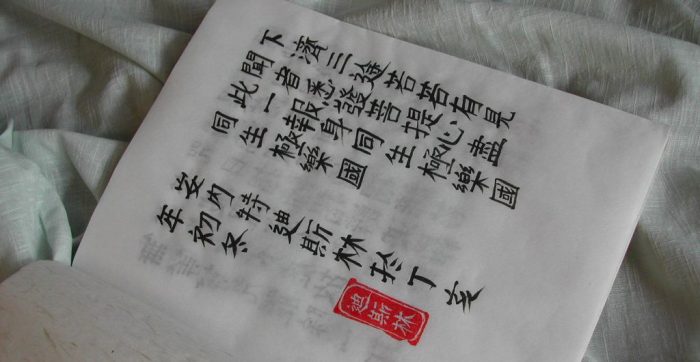
First attempts in cutting stamps from soapstone
Exhibiting at 19th Minipressenmesse in Mainz
Studio exhibition „A book comes into being all by hand”
A tiny little platen press arrives, bringing very special metal type: one that is not mirror image
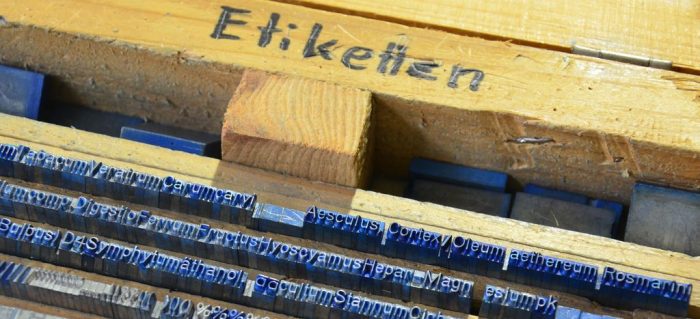
Interviewed by Radio Fips, local radiostation in Göppingen
Published in 2007:
„Carrbridge I“ lino etching
Psalm 104 (Creation) broadside with linocut
„Hundkeks“, recipe for dog biscuits, contribution to Drucktopf
„Das Nußzweiglein“ artist‘s book, with 5 lino etchings
Contact
Essay on Victor Hammer (German)
BK Bundesverband Kunsthandwerk
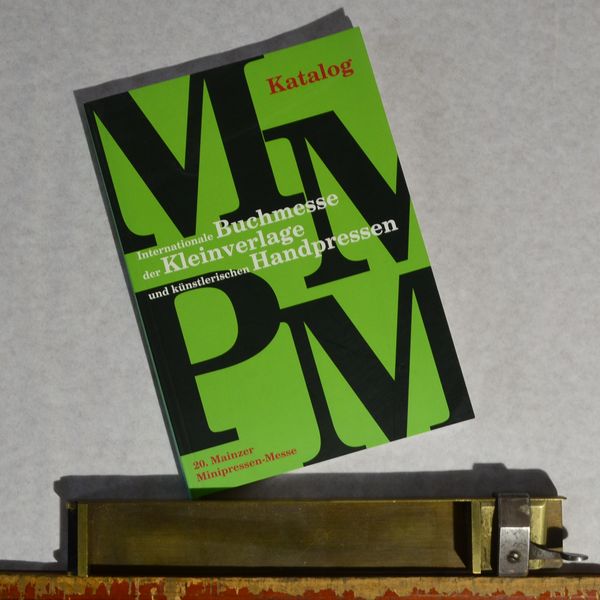
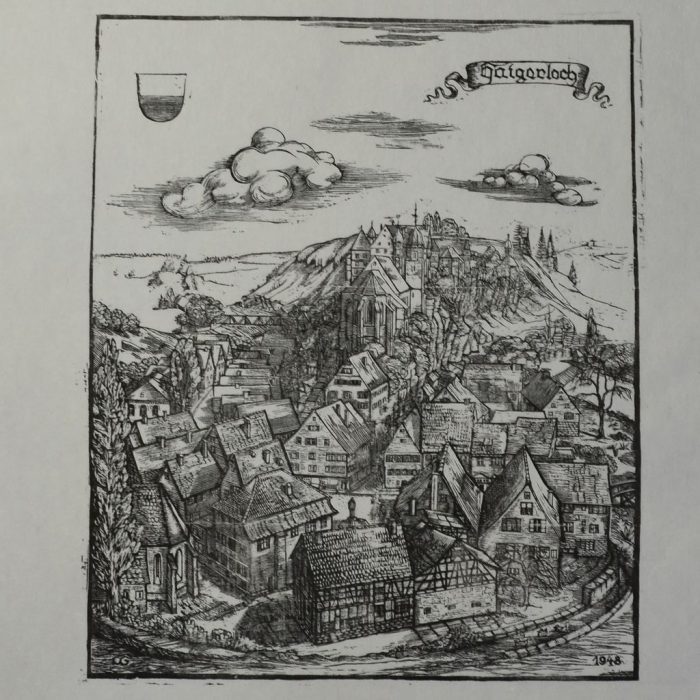
To be continued on 25 April 2024


Another lovely blog posting. I especially love the Chinese calligraphy photo and the burnished wood etching of the village. We don’t have villages like that. What a shame. Love M
Thanks Marianne. I consider myself lucky in that I had the chance, over a few years, to take part in these courses on Chinese calligraphy, until the artist/designer went back to China. She was a Buddhist and the time learning with her was as interesting as it was inspiring. Love A